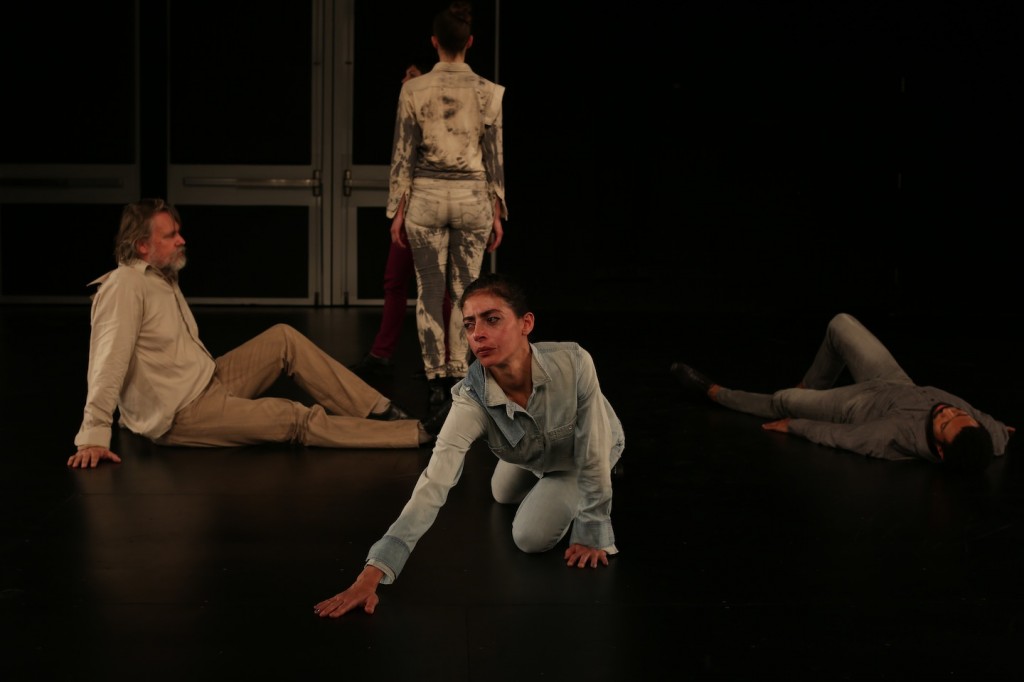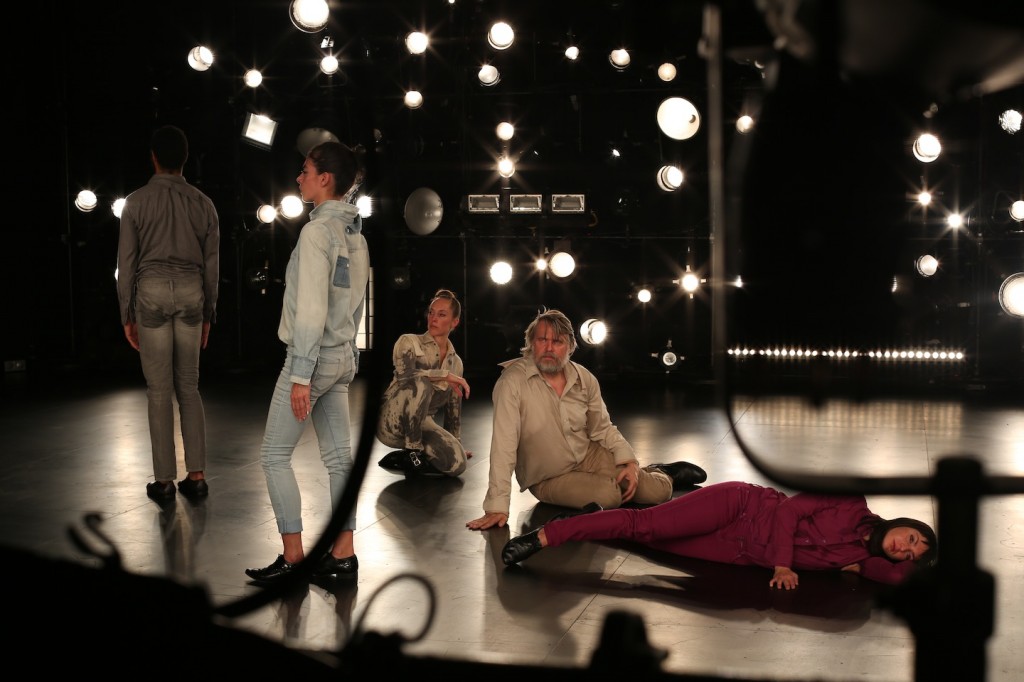Dd Response: Maria Hassabi’s PREMIERE at the Kitchen
What does a crackling fire sound like? Does it resemble the early stages of corn popping in a pot on the stove—when there are intervals of silence between the pops? And is that pneumatic sound of a moving elevator, with the telltale rings for each stop, coming from inside the elevator or outside in the shaft? In Maria Hassabi’s PREMIERE, set to an intermittent and captivating soundscape by Alex Waterman, it was hard not to be consumed by the smallest of details.
Last Saturday at The Kitchen, the audience was forced to walk past a tableaux of five performers in order to get their seats. Facing upstage and posing at different levels, the only visible movement for several minutes came from the slight shudder of the shirts as ribcages expanded and contracted with each breathe. The three women and two men, backs to the audience, were still but very much alive.
The sustained intensity, despite a fair amount of time facing away from the audience, was much to the credit of the compelling individual performers: Hassabi, Biba Bell, Andros Zins-Browne, Hristoula Harakas, and Robert Steyjin. As each performer began to make their own slow shifts towards and away from the audience, their eyes became a clear extension of the incredible presence held in their composed bodies. Gazes were held and exchanged and the audience was both acknowledged and recognized. Hassabi’s moist, confessional eyes conveyed agony and ecstasy in close communion while Steyjin’s placid stare felt open for interpretation and available for transposition. Bell remained slightly removed, at regal angles—at least relative to where I was seated, house left—that captured her profile while Harakas descended into a deep lunge that made for a commanding lookout perch. Having known Harakas for a long time, I was still surprised by the intimacy of sharing her gaze. Her bright eyes warmed me with a humanity that went well beyond our friendship.
The lights, which were hot and almost blinding for most of the show, only occasionally dimmed. Like the soft contrast of an old photograph, the low light captured fragments of a story. In one imagined vignette—I say imagined because the performers never touched each other—the bodies of Hassabi and Zins-Browne faced each other while their heads faced away. In such a spare world, the time spent in that spatial relationship demanded consideration. Likewise, each squeak of a shoe, blink of an eye, and the sweat that slowly darkened their button down shirts (by threeASFOUR) took on elevated significance.
Unlike the easy walking meditation of Hassabi’s SHOW, which was performed at The Kitchen in 2011, PREMIERE was a difficult seated meditation. SHOW was comprised of the same slow, incremental movement, but the installation-like presentation allowed for the audience to be in flux and move in close proximity around the two performers, Hassabi and Harakas. In contrast, the formal seating of PREMIERE created a remove, a sort of attention obstacle that both the performers and the audience had to either overcome or endure.
Yet, in feeding off the pleasure of delayed gratification, Hassabi also delayed the inevitable: the disappointment that emerges when the reality of art fails to match the expectation of art. PREMIERE was pure anticipation and in the heightened state of it, each twitch, shift, and noise wrought a deeper connection between the artists and the viewers. By the time Hassabi’s tableaux “premiered” downstage, mirroring the opening formation, relationships had formed and the end was less like a conclusion and more like an arrival.







[…] wearing costumes by the design group threeasfour, up close as they move in riveting, slow motion. (Click here to read my review of the last Hassabi show I […]